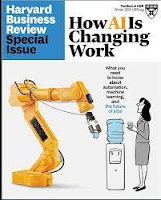TL;DR -- Education has been of prime concern from the earliest days of New England. Boston Latin School and Harvard date from the 1630s. Technology and its growing impact will put even more emphasis on education. So, both will be recurring themes. A brief look considered how quickly colleges were instituted as new areas were developed. Using only a few states, we can see that the march of admission of States associates well with the establishment of the educational focus in its regions.
--
We have had posts related to the long reach of New England, in particular the eastern part, starting with Essex County for obvious reasons. Too, we have an interest in technology and its influence on people, including research related to acquisition of sufficient information and knowledge in order to have some semblance of control so as to foster the American experience. Harvard has figured heavily as we can watch its evolution through history along with that of the U.S. as a whole. For balance, we have started to consider MIT, as well, from its 1865 inception.
Over the past couple of years, we have dived into the western movement, keeping in mind the New England connections, time frames, and the various paths taken across the wide expanse. That research got us looking at the expansion of technology's impact, both before and after the appearance of the railroad. The major part of the U.S. obtained after colonies expanded was partitioned by efforts of both a technical and cultural natured coordinated out of St. Louis, MO. Too, we looked at the early partitionings related to New Spain, New France and others.
One aspect of New England was the emphasis on education. Two schools were early, being established in the 1630s: Boston Latin School (1635) and Harvard (1636). According to one survey, the next college in Massachusetts was established in 1784 (Becker of Worcester). On the other hand, William and Mary of Virginia started in 1693.
In this posts, we are starting to look at education, at a higher level, over the span of the 400 years. Having looked at the very early starts, the following table considers a few of the U.S. States which are of special pertinence to the topic. Namely, we look at these by order of the admission of the State to the Union. Too, there are links to two reports: Top Universities, List of Universities from University Review.
For each of these, we provide the year of admission, name of the State, number of ranked universities, the university, year the university started, and where it is.
- 1788, Massachusetts, 80 -- Harvard, 1636, Cambridge
- 1788, Virginia, 42 -- William and Mary, 1693, Williamsburg
- 1845, Texas, 91 -- Southwestern, 1840, Georgetown
- 1850, California, 137 -- Dominican School of Philosophy & Theology, 1851, Berkeley
- 1861, Kansas, 26 -- Baker, 1858, Baldwin City
- 1876, Colorado, 23 -- Denver, 1864, Denver
After this brief look at higher ed, we can consider education as a whole, Massachusetts was early in emphasizing its importance. Cities were to have Latin schools. Two are still in existence, Boston (1635) and Roxbury (1645). That habit continued as States were developed and joined the Union.
Remarks: Modified: 01/28/2022







